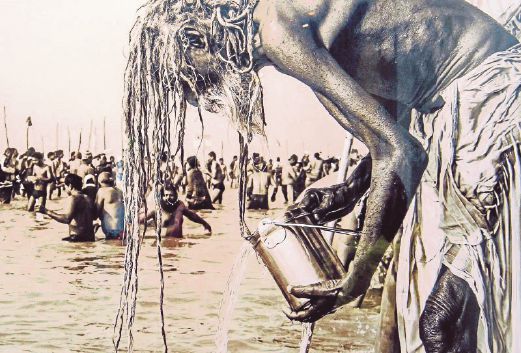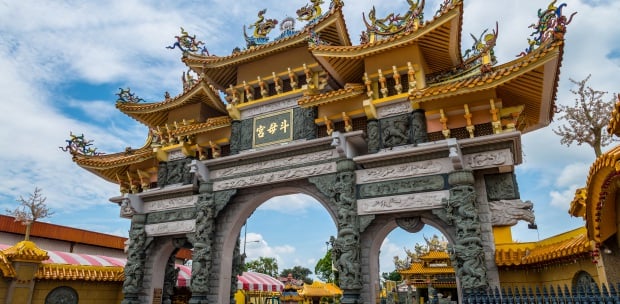Lalit Verma presents striking images from Kumbha Mela, one of the largest religious assemblies in the world, writes Sarah NH Vogeler
KUMBH Mela (word of Hindi origin) and Kumbha Mela (in original Sanskrit and other Indian languages) refer to the “festival of the pot”. It’s one of the most significant religious gatherings in the world and the most recent held in Allahabad last year, was attended by more than 80 million people.
In 2010, Kumbha Mela was held in Haridwar, on the banks of the Ganga from Jan 14 to April 28. Lalit Verma shares with audiences some distinctive instants that bring alive the religious fervour and magical essence of the Kumbha Mela. He initiated one of the most respected art galleries of India (Aurodhan) and curated several shows all over the world.
His introduction as a photographer is beautifully articulated by the observation of renowned American photographer Mary Ellen Mark: “Beautiful work by a man who loves and understands India. Bravo!”
SING, PRAY, EAT AND SERVE
Spirituality, a symbol of Indian custom, voices itself in vibrant religious ceremonies along the banks of hallowed rivers and temples and the most significant of these is the Kumbha Mela.
It has its beginnings in the tale of Samudra Manthan, where the gods and demons stirred the Milky Ocean to make the elixir of immortality, a pot of Amrita. A 12-year melee ensued to stake claim for the pot of nectar. During this time, four beads of nectar trickled and fell on four places on Earth: Allahabad (Prayag in Uttar Pradesh), Haridwar (Uttarakand), Ujjain (Madhya Pradesh) and Nasik (Maharastra). All four sites are now revered pilgrimage destinations that host the Kumbha Mela alternately on four astrologically propitious dates, once in every 12 years.
Millions of pilgrims — from guru and sadhu to villagers and tourists — swarm to the Ganga during this festival to participate in religious discussion and dialogue, to sing, pray, eat and serve, to rejoice as a collective. Most notably they immerse in her holy waters through the Shahi Snan (Royal Bath). The water is believed to transform to amrita, to cleanse them of sins as well as those of their forefathers and to release them from the cycle of rebirth.
The naga sadhu (or naga baba), who have the honour of taking the first plunge during the Shahi Snan, draw attention with their unclothed figures marked with cinders, beautifully-tangled tresses, embellished in curative Rudraksha bead ornaments and smoking chillum and marijuana, in vessels made of clay to realise spiritual enlightenment or release.
In 1895, after a sojourn at Kumbha Mela, Mark Twain observed: “It is wonderful, the power of a faith like that, that can make multitudes upon multitudes of the old and weak and the young and frail enter without hesitation or complaint upon such incredible journeys and endure the resultant miseries without repining. It is done in love, or it is done in fear; I do not know which it is. No matter what the impulse is, the act born of it is beyond imagination, marvelous to our kind of people, the cold whites”.
Lalit’s photographs of Kumbha Mela give us a glimpse of the spiritual exhilaration these partakers visibly and deeply feel, of a nature of joyous abandonment of a remarkable culture, a sense of the sacred between people and the landscape.
The next Kumbha Mela will be held next year at Nashik (Maharashtra) from July 14 to Sept 25.





